Temple of Philae
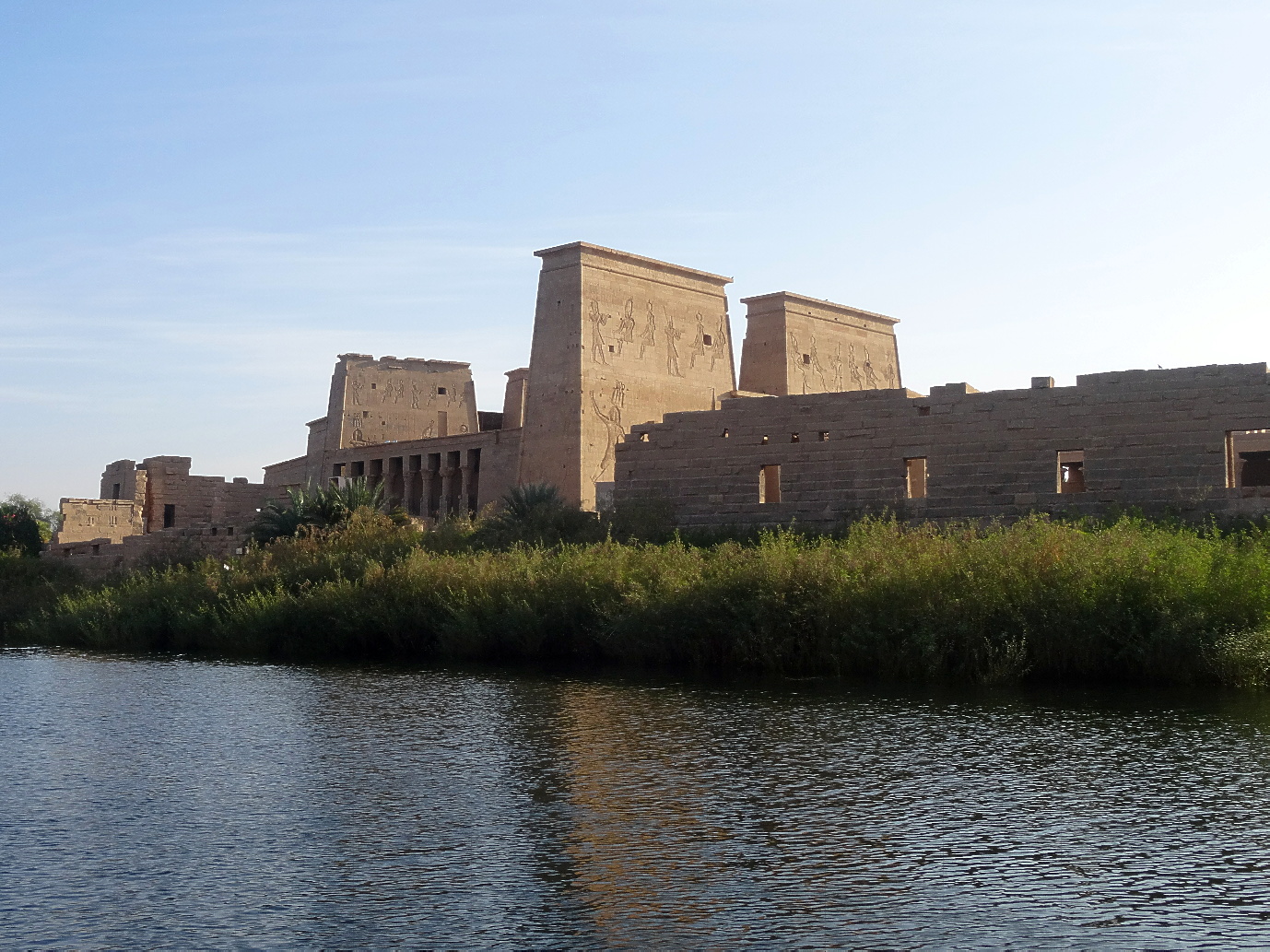
†
Summary
The Temple of Philae is located on an island in the River Nile and was a major place of pilgrimage for the ancient Egyptians. Dedicated to the Goddess Isis the temple complex was moved to another island in order to avoid it being submerged on the construction of the Aswan High Dam in the 1960s.
† |
The Temple of Philae is located on the island of Agilka near the first cataract (shallow white-water rapids) on the River Nile and is dedicated primarily to the Egyptian Goddess, Isis, although her consort Osiris and her son Horus were also worshipped there. Considered to be the burying-places of Osiris, Philae became a place of pilgrimage. Temples and shrines dedicated to other deities, including Hathor and Harendotes were also constructed there.
Philae was not, however, merely a religious complex. It was the centre of commerce between MeroŽ (capital of the ancient kingdom of Cush) and Memphis (capital of Egypt during the Old Kingdom era), as the rapids of the cataracts were impassable for most of the year, resulting in Philae being a place for the exchange of goods between Egypt and Nubia.
Although a temple for the Goddess Isis was built in the reign of Nectanebo I during 380-362 BCE, the current Temple was built by Ptolemy II Philadelphus who was the king of Ptolemaic Egypt from 283 - 246 BCE. It is believed that the Temple developed from a shrine constructed by Amasis I Pharaoh from 1550Ė1525 BCE.
Apart from its prominence in the Egyptian religion, Philae has also been a seat of the Christian faith, and after the Temple was closed down officially by the Byzantine emperor Justinian (527-565 AD), in 535 AD the Temple was converted to a church dedicated to St Stephen. At this time, many of the sculptures in the Temple were extensively damaged by the Christians. Additional damage was also sustained when Pope Gregory XVI sent an archaeological expedition to Philae in 1841. The Temple also contained a church dedicated to the Virgin Mary. One of the altars can still be seen today in the Temple of Isis.
†
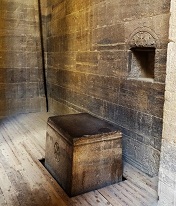
Following the construction of the old Aswan dam in 1902 the Temple was flooded for the majority of the year and was only able to be visited for a short period. It was proposed at that time that the Temple be relocated to a nearby island, but the foundations were strengthened instead; something that protected the buildings, although the colours of the Temples' reliefs and the vegetation were destroyed by the water. Also, the Temples became encrusted with silt and other debris carried by the Nile.
The Temple was threatened further by the construction of the Aswan High Dam in the 1960s. This resulted in a project by UNESCO and the Egyptian Government to dismantle the Temple and move it to the nearby island of Agilka, which was reshaped to resemble the original island on which the temple stood. This involved the construction of a coffer dam around the site enabling the site to be drained. Each of the 40,000 stone blocks were then labelled and removed and transported the 500 metres to the higher ground on Agilka where they were reassembled. The whole project took ten years, which enabled it to be finished before the completion of the High Dam in 1970s, and the subsequent flooding of the island on which it had previously stood.
Most of the ruins date from the Ptolemaic times and from the reigns of Ptolemy Philadelphus, Ptolemy Epiphanes (205-185 BCE), and Ptolemy Philometor (280-145 BCE), although they also contain work carried out during Roman times. The site contains many small temples, with particular emphasis to the deities related to midwifery; no doubt in deference to the Goddess Isis who was worshipped as a Goddess of Healing, and Welfare and was also believed to have cured the sick and to have magical powers. In fact, she is still worshipped today by many Pagans.
Today, the Temple is reached by boat, and visitors can gain an indication of its layout even before landing, as can be seen from the main photograph at the top of this page. Although the layout can also be seen when on the island.
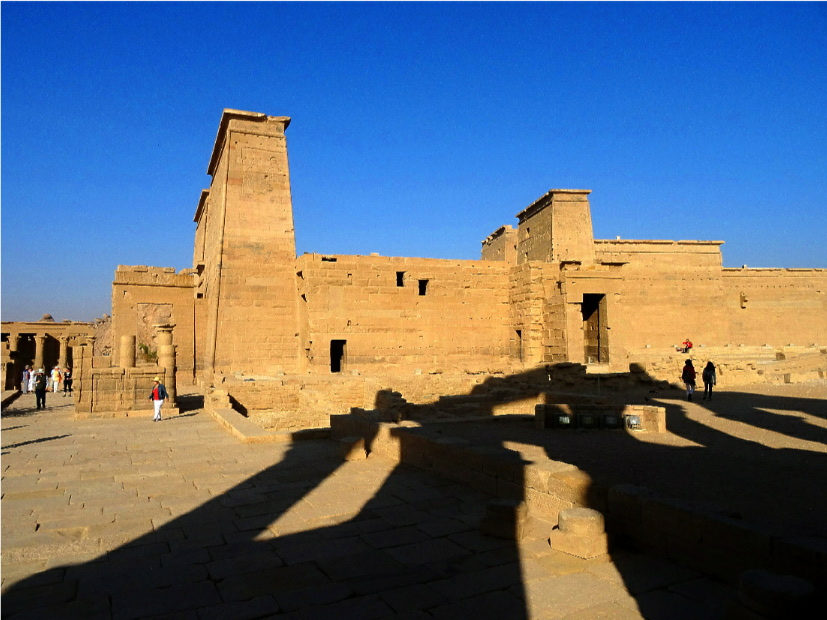
Ascending from the boat, the Temple of Imhotep and the Kiosk of Nectanebo.
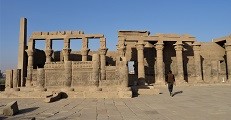
These precede two colonnades leading towards the first pylon of the Temple of Isis.
The western colonnade is in better condition and is around 90 metres (295 ft) and contains 31 of the original 32 columns with their floral capitals, each of which is different.
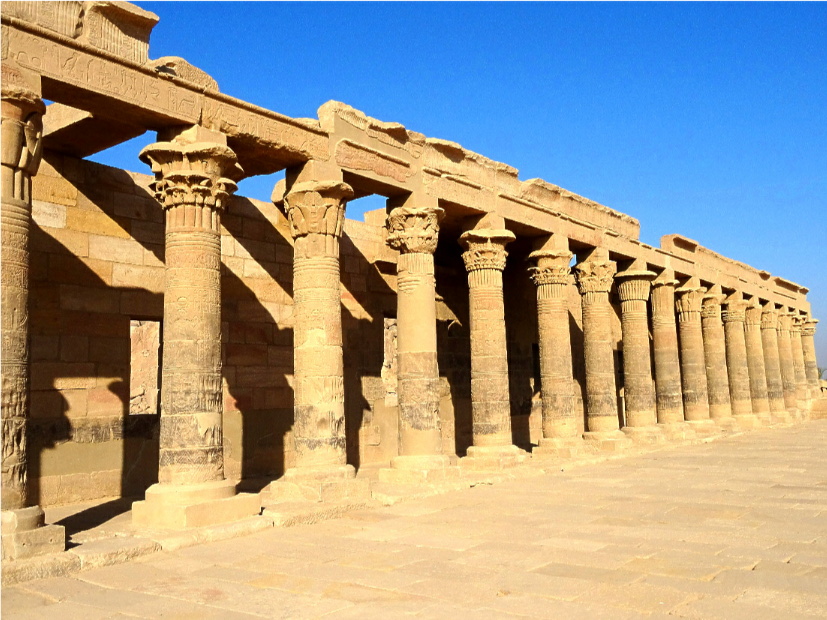
Some of the columns depict the Roman Emperor Tiberius, whilst there are also reliefs of Tiberius and Augustus on the wall at the rear. The ceiling still contains the remains of the decoration of stars and vultures. The eastern colonnade was never completed.
The first pylon consists of two 18 metres (60 ft) towers with a gate between them. The gateway was constructed by Pharaoh Nectanebo during the 30th dynasty - the last of the Egyptian dynasties - and predates the rest of the first pylon. Nectanebo can be seen on the gateway with a number of the Gods. Also to be seen are a number of Coptic Christian crosses cut into the stone.
Leading to the gateway are a series of steps, either side of which were two large granite lions, behind which stood a pair of granite obelisks 13 metres (43 ft) high (only the bases of which now remain). These lead between the two towers.
†
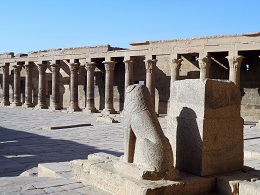
On either side of the gateway are grooves cut into each side of the pylon to support flag poles. Construction of the pylon was begun by Ptolemy II Philadelphus and finished by Ptolemy III Euergetes I, but inscriptions were also added by their successors.
†

†
Passing through the first pylon is the inner courtyard. To the left is the Mammissi (Birth House) of Isis which is surrounded on three sides by a colonnade with floral topped columns each crowned with a Hathor-headed capital and abuts the second pylon.

The walls depict a number of the Pharaohs and the Gods. On the right of the courtyard is a colonnade which provides access to a number of small rooms, which may have been used for storerooms, a library and purification rituals.
Throughout the complex are relieves depicting the events relating to the gods and to the pharohs.
†
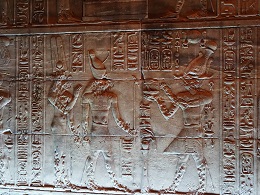
Straight ahead in the courtyard is the Second Pylon which provides access to the Temple of Isis. The second pylon is approximately 32 metres (105 ft) wide and 131 metres (40 ft) high and is unusual in that it is not parallel to the First Pylon.
†
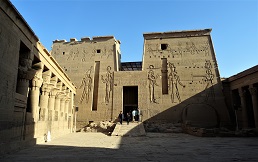
The towers depict Ptolemy XII making offerings of incense and animals to Horus and Hathor. The pylon also has grooves for containing the flagpoles, which is usual for temple pylons.
On entering the Temple, three small antechambers with small rooms set off them are found, whilst straight in front is the sanctuary itself. The sanctuary is a small chamber which contains the pedestal upon which would have stood the statue of Isis.
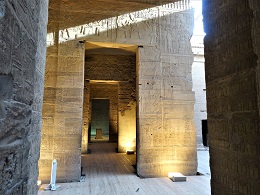
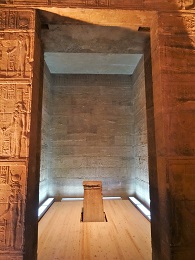
Adjacent to the main temple complex of Isis is the Temple of Hathor.
†
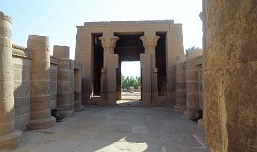
This consists of a colonnaded hall and a small forecourt which was constructed by Ptolemy VI Philometor and Ptolemy VIII Euergetes II and was later decorated by Augustus to show the festivals which honoured Isis and Hathor.
The well-preserved rectangular building containing fourteen columns with floral capitals is known as Trajanís Kiosk being attributed as being built by the Roman Emperor Trajan. Two of the walls are decorated with images of Trajan making offerings to Isis, Osiris and Horus.
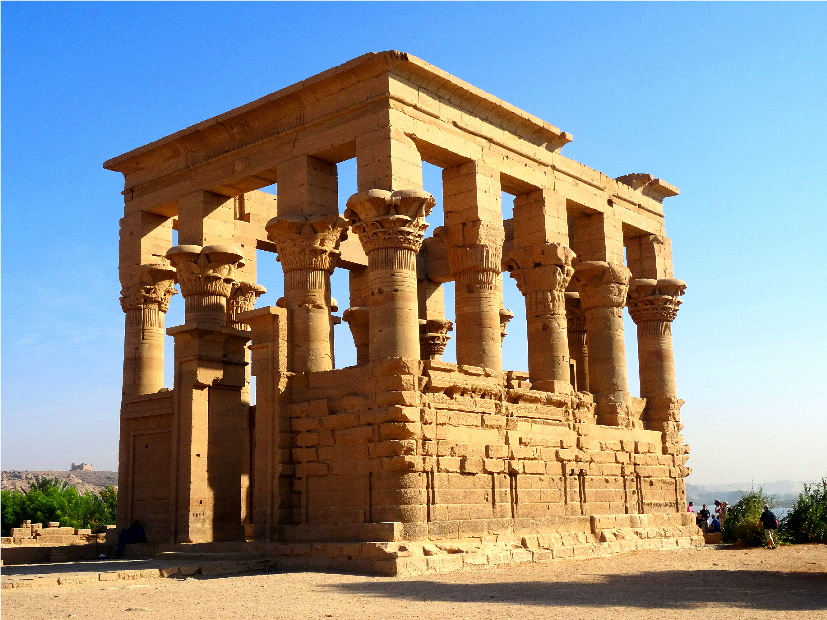
Philae was a site of great importance not only to the Ancient Egyptians, but also to the Greeks and Romans and is today a major tourist attraction and a UNESCO World Heritage Site.
















